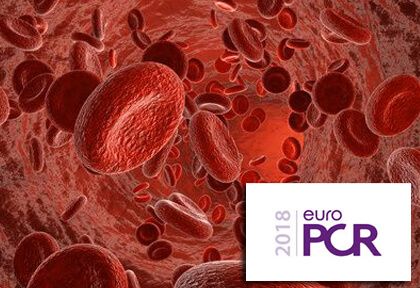This work compared the safety and efficacy of angioplasty with thin-strut (80 µm) sirolimus-eluting stents with a cobalt chromium structure (Ultimaster) vs. thick-strut (120 µm) biolimus-eluting stents with a cobalt chromium structure (Nobori).
 This study compared two prospective multicenter single-arm registries: e-Ultimaster and NOBORI 2. The Ultimaster Registry included over 37,000 patients in 4 continents, while the NOBORI 2 Registry included over 3000.
This study compared two prospective multicenter single-arm registries: e-Ultimaster and NOBORI 2. The Ultimaster Registry included over 37,000 patients in 4 continents, while the NOBORI 2 Registry included over 3000.
After a 1-year follow-up, patients who received an Ultimaster stent presented lower rates of acute myocardial infarction (1.2 vs. 2.2%; p < 0.01), target-lesion failure (3.2 vs. 4.1%; p = 0.02), and vessel-treatment failure (3.8 vs. 4.9%; p = 0.004) compared with patients treated with a Nobori device.
Read also: EuroPCR 2018 | Consistent CTO Study: Rechanneling with Current Techniques and SYNERGY Stents.
There were no differences as regards clinical endpoints (6.0% vs. 6.7%; p = 0.15) or stent thrombosis at one year (0.6% vs. 0.7%; p = 0.48).
These results show potential benefits of thin-strut stents with faster polymer absorption.
Original title: A Comparison Between Thin and Thick DES Implantation in Patients with Coronary Artery Disease: One-Year Clinical Outcomes of Two International Registries.
Presenter: F. Kauer.
Get the latest scientific articles on interventional cardiologySubscribe to our weekly newsletter
We are interested in your opinion. Please, leave your comments, thoughts, questions, etc., below. They will be most welcome.





